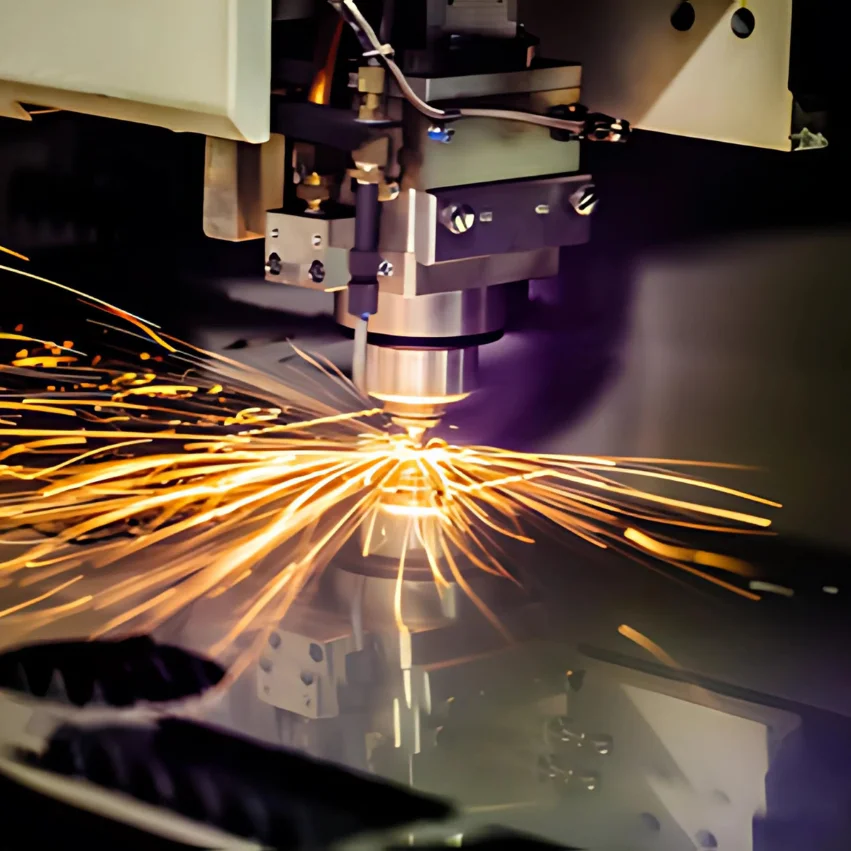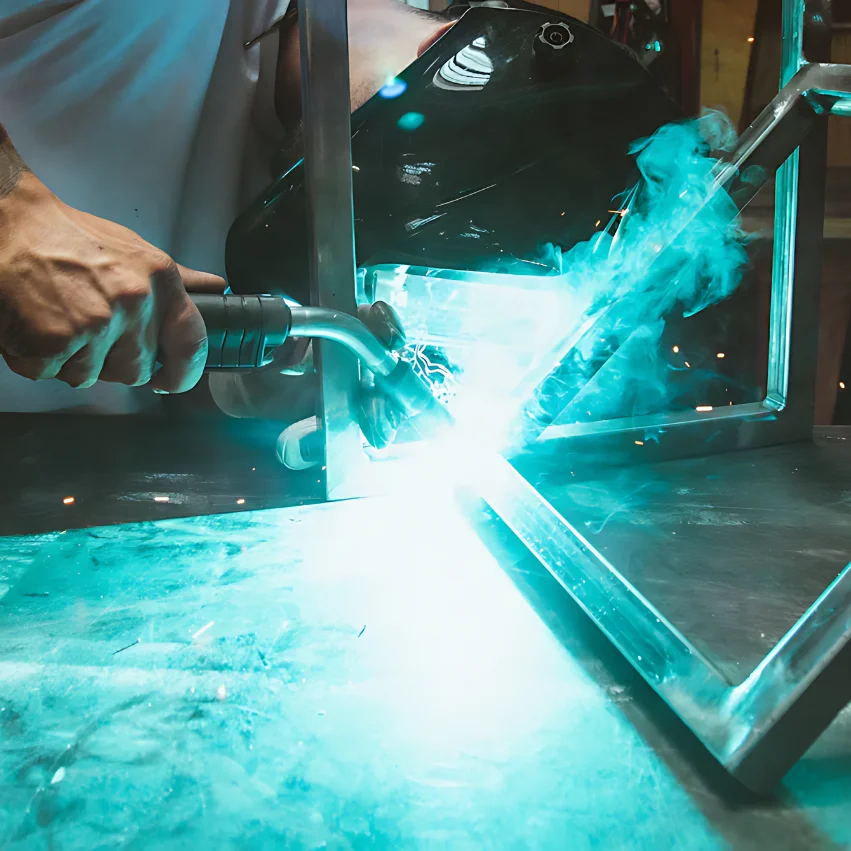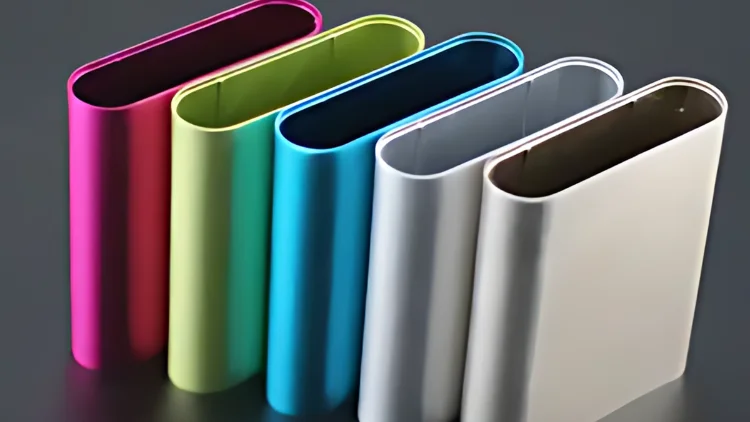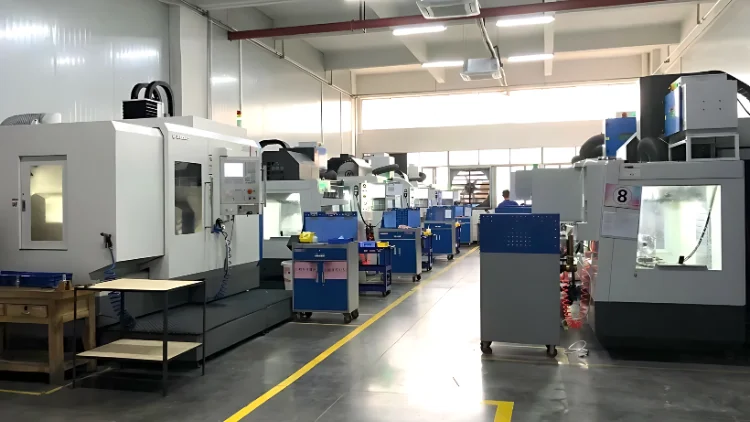Metal fabrication is the backbone of modern manufacturing and construction. It transforms raw materials into useful products and structures with precision and durability while increasing production efficiency and reducing costs. This guide will explore the six main types of metal fabrication: cutting, forming, welding, machining, assembly, and surface treatment.
What is Metal Fabrication?
Metal fabrication is the process of shaping and shaping metals to create useful tools, articles, equipment parts, and structures. It typically involves cutting, welding, casting, and forming techniques, and the materials processed include ferrous and nonferrous metals such as steel, aluminum, and bronze. Metal fabrication changes the shape and size of metals through force, temperature, or removal of excess material to suit specific applications.
Introduction to the 6 Types of Metal Fabrication
Cutting
Cutting is the removal of material to cut metal into the desired shape. Techniques include shearing, sawing, and the use of advanced tools such as lasers and water jets. For example, laser cutting uses a high-powered laser beam to precisely cut metal. Plasma cutting, on the other hand, uses an ionized gas jet to quickly cut thick materials.
Pros: High precision and the ability to process complex shapes with minimal material waste. Laser cutting, in particular, has excellent precision and is ideal for complex designs. Plasma cutting is efficient with thicker materials and cuts quickly.
Cons: High initial cost of advanced cutting tools and the potential for material deformation. Equipment and maintenance costs are high, and laser cutting is more expensive. Plasma cutting can produce rough edges that require additional finishing.
Forming
Forming involves applying force to metal to change its shape. Common methods include bending, rolling, and stamping. Bending uses a machine such as a press brake to bend a sheet of metal to a specific angle. Rolling passes the metal through rollers to achieve the desired thickness and shape. Stamping uses a die to press shapes into a sheet of metal.
Pros: Strong finished product, fast production, cost-effective for high-volume production. The molding process is efficient and can produce large numbers of parts quickly. The final product is durable and strong.
Cons: Requires specialized equipment and is limited to certain shapes and materials. The molding process may be limited by material properties, such as thickness and hardness. Specialized equipment can be costly and requires a skilled operator.
Welding
Welding uses heat to melt the edges of metal parts and then fuse them. Welding techniques include MIG (metal inert gas) welding, TIG (tungsten inert gas) welding, and arc welding. MIG welding is versatile and works on a variety of metals, while TIG welding provides high precision for fine work. Arc welding is often used for heavy-duty applications.
Pros: Strong joints, a wide variety of materials and shapes, and relatively low cost. Welding creates a strong, permanent bond between metal parts. Welding works with different materials and thicknesses and is suitable for a variety of applications.
Cons: Requires skilled labor, the potential for warping or defects, and safety concerns. Welding can be complex and requires experienced operators to ensure quality and safety. Improper welding can result in weak joints or material distortion.
Machining
Machining is the removal of material to obtain the desired shape. Techniques include turning, milling, and drilling. Turning uses a lathe to spin metal while cutting it into the desired shape. Milling uses a rotating tool to remove material from the surface of the metal. Drilling creates precise holes in the metal.
Advantages: High precision, ability to produce complex parts, and excellent surface finish. Machining processes offer high precision and can create complex designs with tight tolerances. Finished parts have smooth surfaces and are ready for assembly.
Disadvantages: High machinery and tooling costs, slower production rates, and material waste. Machining requires a significant investment in equipment and tooling. The process can be time-consuming, especially for complex parts, and generates material waste.
Assembly
Assembly is the joining of dissimilar metal parts by using fasteners, adhesives, or welding. Bolting and riveting are common mechanical fastening methods, while bonding uses special glues to secure parts together. Assembly lines may also employ welding to form permanent connections.
Advantages: Design flexibility, ease of repair and replacement, and modular construction. Assembly allows for easy customization and modification. Parts can be replaced or repaired without disassembling the entire structure, making maintenance simpler.
Disadvantages: Can have weak joints, is time-consuming, and may require additional finishing. Mechanical fasteners and adhesives may not provide as strong a joint as welding. Assembly can be labor intensive and may require additional steps to ensure a high-quality finishing.
Finishing
Finishing involves applying coatings, polishing, and other surface treatments to enhance appearance and prevent corrosion. Techniques such as powder coating, anodizing, and electroplating are commonly used. Polishing gives the metal a smooth, glossy finish.
Advantages: Improved durability, enhanced aesthetics, and protection from environmental factors. Finishing processes extend the life of metal products by protecting them from rust, corrosion, and wear. They can also improve appearance, making the product more attractive to consumers.
Disadvantages: Additional cost, potential for defects, and periodic maintenance may be required. Finishing processes can increase overall production costs. Improper application or coating defects can affect the performance and appearance of the product. Periodic maintenance may be required to maintain the finish.
Industrial Applications
Each industry utilizes specific metal fabrication processes to meet unique needs. Here are the detailed applications and applicable methods for major industries:
Automotive Industry
Methods such as stamping and hydroforming are ideal for automotive body panels and frames. These processes can produce complex shapes at high speeds while minimizing material waste.
Techniques such as MIG and spot welding ensure strong joints that can withstand daily use. For example, these welding techniques are used in key areas such as doors, chassis, and frames. Modern unibody structures rely on a large number of welds to create a seamless, strong frame. This design not only enhances the structural rigidity of the entire vehicle but also greatly improves crash safety performance to better protect passengers.
Aerospace Industry
CNC machining is essential for the production of high-precision aircraft parts, ensuring tight tolerances and excellent surface finish. These parts must perform reliably under extreme conditions.
TIG welding can be used to join thin materials without compromising strength, making it ideal for fuel tanks and fuselage sections.
Construction Industry
Plasma and laser cutting can be used to precisely shape steel beams and columns, reducing material waste and ensuring efficient use of resources.
Processes such as bending and rolling create custom metal parts for buildings and bridges, producing the curved and angled elements essential to modern architectural design.
Electronics Industry
High-precision machining produces complex components such as connectors, housings, and heat sinks, ensuring a perfect fit and reliable function.
Processes such as anodizing and electroplating increase the durability and conductivity of electronic parts, enhancing corrosion resistance and electrical insulation for long-lasting performance.
What Machining Method Should I Choose?
Selecting the right metal fabrication method is critical to achieving the best results for your project. Here are the detailed considerations for making this choice:
Desired Product Shape
Processes such as stamping and bending are very effective for producing simple, repetitive shapes. They are cost-effective for high-volume production.
Technologies such as CNC machining and laser cutting are better suited for complex and precise shapes. These methods offer high precision and fine detail but can be more expensive.
Production Volume
Automated processes such as robotic welding, CNC machining, and stamping are ideal for mass production. They are fast, consistent, and have low labor costs.
For low-volume production, low-cost cutting methods such as hand welding, hand machining, or sawing may be more economical.
Budget
Advanced technologies such as laser cutting, water jet cutting, and precision CNC machining offer superior quality and accuracy. While they have a higher initial cost, they are very useful for projects that require high precision and tight tolerances.
More traditional methods such as hand cutting, simple forming, and basic welding can reduce costs. These methods are effective for projects where precision is not a high priority.
Consult an Expert
Consult a manufacturing expert who can assess your project needs and recommend the most appropriate method. They can also provide cost estimates and feasibility studies to aid in decision-making.
Prototyping with different manufacturing methods can help determine the best process. This allows material properties, fit, and finished product to be tested before full production.
Related Reading:What Does a Metal Fabricator Do? A Complete Guide
In Summary
For specialized tasks, trust the experts. If you need metal fabrication services, our company is your best choice. We have the expertise, advanced equipment, and ample resources to efficiently handle complex projects. Working with us can significantly reduce costs, improve product quality, and ensure timely project completion.







